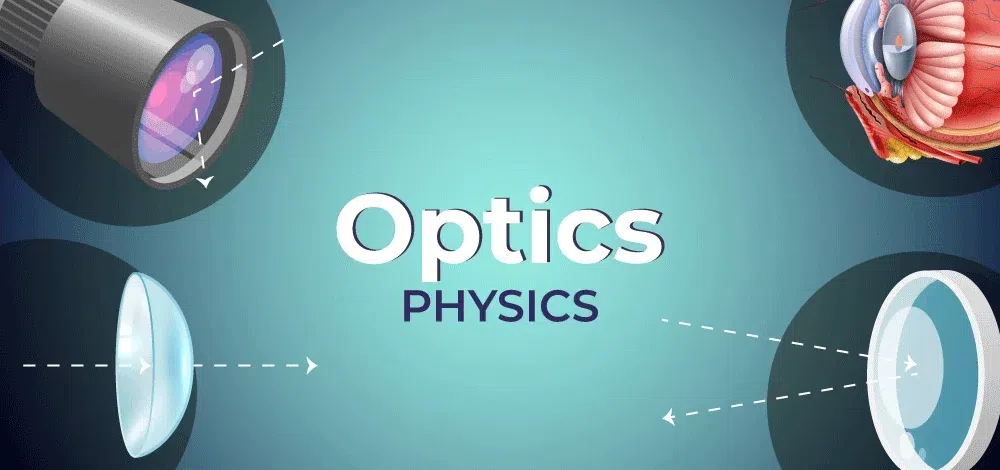
|
|
Optics is an important branch of physics, that tells about the behavior of light when interacting with various mediums and surfaces, phenomena like the formation of the rainbow, working of the microscope, answering questions about how light travels, reflects, refracts and forms images, etc. It is important for the development of various revolutionized fields including communication and healthcare, astronomy, and entertainment. In this article, we will study optics, concepts, and formulas related to optics.
What is Optics?Optics is the branch of physics that deals with the study of light and its interactions with matter. It encompasses the behavior of light, the properties of optical instruments, and the phenomena associated with the transmission, reflection, refraction, diffraction, and polarization of light. Optics plays a crucial role in understanding how light behaves and is manipulated in various applications, including imaging, communication, microscopy, spectroscopy, and laser technology. Important Terms Related to OpticsThe important terms related to optics are: LightsLight is a form of electromagnetic radiation that is visible to the human eye. It is composed of tiny packets of energy called photons, which travel in waves. Light plays a fundamental role in our perception of the world, allowing us to see objects, colors, and shapes. Beyond its role in vision, light has profound effects on various natural phenomena and is essential for sustaining life on Earth through processes such as photosynthesis. Relationship Between Wavelength and EnergyThe relationship between Wavelength and Energy is given by:
here ,
Reflection of Light
Laws of Reflection There are two laws of reflections:
MirrorA mirror is an object with a reflective surface that reflects light rays, allowing the formation of images of objects placed in front of it. Mirrors are commonly used for various purposes, including personal grooming, decoration, and optical instruments. Types of MirrorMirrors are further classified into three types which are described below: Plain Mirror
Image is formed behind the mirror at the same distance as the object, with the same size and orientation and is virtual. Concave Mirror
Convex Mirror
Also Check, Mirror Formula and Magnification ImagesThere are mainly two types of images that are formed due to reflection: Real Image
Virtual Images
Refraction of LightPhenomenon of bending of light rays after passing from denser medium to rarer medium toward the normal and away from the normal when passing from rarer to denser medium is called refraction of light. It is because of change of speed of light , because different mediums have different refractive index ,which indicates how much light slows down when passing through it compared to its speed in a vacuum.
Snell’s LawSnell’s law, also known as the law of refraction, states that the ratio of the sine of the angle of incidence (θ₁) to the sine of the angle of refraction (θ₂) is equal to the ratio of the velocities of light in the two respective mediums. Mathematically, it can be expressed as:
Where:
LensesA lens is a transparent optical device that refracts (bends) light rays as they pass through it. Lenses are typically made of glass or plastic and have curved surfaces that can converge or diverge light rays, depending on their shape and curvature. Types of LensesLenses can be classified into two main types based on their shape and refractive properties: Concave Lens
Convex Lens
Related TopicsBelow is the list of all related articles to optics:
FAQs on OpticsWhat is the difference between specular and diffuse reflection?
How are real and virtual images different?
What determines the type of image formed by a lens?
How does refraction contribute to the bending of light?
What are some common optical instruments used in everyday life?
|
Reffered: https://www.geeksforgeeks.org
| School Learning |
| Related |
|---|
| |
| |
| |
| |
| |
Type: | Geek |
Category: | Coding |
Sub Category: | Tutorial |
Uploaded by: | Admin |
Views: | 14 |

